Time series data is becoming increasingly important, especially with the rapid growth of AI and machine learning. If you’re involved in forecasting or data analysis, having access to the right datasets can make all the difference. Here are five standout time series datasets that are my personal favorites:
1. M4 Dataset
The M4 dataset is a cornerstone in the world of forecasting. It includes 100,000 time series covering various areas such as finance, economics, and demographics. Originally created for a major forecasting competition, it remains one of the best resources for testing and improving predictive models.
Some use cases:
- Ideal for building and testing robust forecasting models.
- Offers a diverse range of data, reflecting real-world challenges.
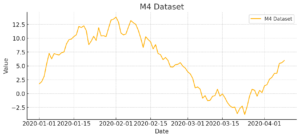
2. Electricity Consumption Dataset
This dataset tracks household electricity usage over time. As energy efficiency becomes increasingly important, this data is invaluable for predicting future energy needs and optimizing consumption. It’s particularly useful for those working on smart grid technologies.
This dataset is a plus if you want to:
- Supports the development of energy-efficient technologies.
- Crucial for smart grid research and sustainability initiatives.
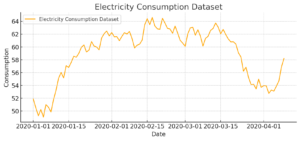
3. Traffic Dataset
Traffic volume data is essential for urban planning and transportation management. This dataset allows for the prediction of traffic patterns, optimization of logistics, and better infrastructure planning. As urban areas continue to grow, this data is more relevant than ever.
Why It’s Important:
- Enhances urban planning and traffic management.
- Helps reduce congestion and improve overall traffic flow.
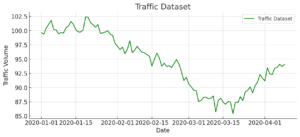
4. Solar Energy Dataset
As the world shifts towards renewable energy, the Solar Energy dataset becomes increasingly relevant. It provides data on solar power generation over time, which is essential for optimizing solar farms and integrating renewable energy into the power grid.
The main uses:
- Crucial for advancing renewable energy technologies.
- Supports the integration of solar power into existing energy systems.
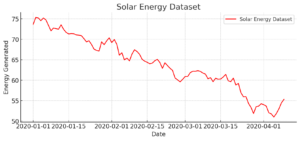
5. Temperature Dataset
This dataset contains historical temperature records from various locations. It’s a key resource for climate research and weather forecasting. With climate change being a global concern, this data helps in developing models that predict environmental changes.
My personal favorite:
- Essential for climate change research and understanding global warming.
- Supports the development of accurate weather prediction models.
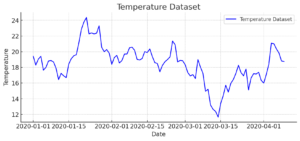
Here are the links to the these datasets:
- M4 Dataset: https://forecasters.org/resources/time-series-data/
- Electricity Consumption Dataset: https://archive.ics.uci.edu/ml/datasets/Individual+household+electric+power+consumption
- Traffic Dataset (PEMS-SF): https://archive.ics.uci.edu/ml/datasets/PEMS-SF
- Solar Energy Dataset: https://data.nrel.gov/submissions/139
- Temperature Dataset: https://www.ncei.noaa.gov/cdo-web/datasets
Here is also link to additional datasets that recently got published. They build on top of these datasets and merge multiple industries for more through analysis and forecasting.
One trend that excites me is the growing focus on probabilistic forecasting. The ability to quantify uncertainty in predictions is crucial, especially in high-stakes fields like finance and healthcare. By integrating Bayesian methods and ensemble techniques, we can provide not just a single forecast but a range of possible outcomes, each with its associated probability. This is a critical step towards making forecasting models more reliable and actionable in decision-making processes.
Emerging Trends in Time Series Analysis and Research
In recent years, there has been a significant shift toward more sophisticated methods in time series analysis, largely driven by the advancements in machine learning and deep learning. Researchers are increasingly focusing on hybrid models that combine traditional statistical methods, such as ARIMA, with deep learning techniques like Long Short-Term Memory (LSTM) networks and Transformer models. These hybrid models are designed to capture both the linear and nonlinear patterns in time series data, making them more effective in handling complex real-world data.
1. Hybrid Models and Deep Learning
- LSTM and GRU Networks: LSTM and GRU (Gated Recurrent Unit) networks have become popular in time series forecasting due to their ability to learn long-term dependencies. These models are particularly useful in fields like energy forecasting, where the prediction of electricity consumption can benefit from capturing both daily and seasonal patterns.
- Transformers: Initially developed for natural language processing, Transformer models are now being adapted for time series forecasting. They excel at handling sequential data and can model long-range dependencies more effectively than traditional RNN-based models.
2. Probabilistic Forecasting
- Bayesian Methods: There’s a growing interest in probabilistic forecasting, which provides not just point forecasts but also the uncertainty associated with predictions. Bayesian methods, such as Bayesian Structural Time Series (BSTS), are gaining traction in academic research for their ability to incorporate prior knowledge and provide credible intervals for forecasts.
- Ensemble Models: Combining multiple models to form an ensemble is another trend. Ensembles can aggregate the strengths of individual models and provide more robust forecasts, which is particularly useful in scenarios like weather forecasting and financial market prediction.
3. Explainability and Interpretability
- As models become more complex, the need for explainability in time series forecasting is more critical than ever. Techniques like SHAP (SHapley Additive exPlanations) and LIME (Local Interpretable Model-agnostic Explanations) are being integrated into forecasting workflows to ensure that models are not just accurate but also interpretable. This is especially important in fields like finance and healthcare, where understanding the decision-making process of models is essential.
Academic Applications of Time Series Datasets
These trends are being applied across various academic disciplines, using datasets like those mentioned earlier. Here’s how these datasets are being utilized in academic research:
1. M4 Dataset in Academic Research
- Benchmarking and Competitions: The M4 dataset has been extensively used in academic settings for benchmarking new forecasting methods. It serves as a standard dataset in many forecasting competitions, driving innovation in model development. Researchers use it to test the effectiveness of new algorithms, comparing their performance against established benchmarks.
- Model Validation: Academics often use the M4 dataset to validate the robustness of new forecasting models across different domains, including finance, tourism, and retail. The dataset’s diversity allows for the testing of models in various contexts, ensuring that the models are generalizable.
2. Electricity Consumption Dataset in Academic Research
- Energy Forecasting: The Electricity Consumption dataset is pivotal in the research of energy demand forecasting. Academic researchers use it to develop models that predict future energy consumption patterns, which are crucial for optimizing power grid operations and integrating renewable energy sources.
- Sustainability Studies: This dataset is also used in sustainability research, where academics study the impact of behavioral changes on energy consumption. By analyzing historical consumption patterns, researchers can identify trends and propose interventions that lead to more sustainable energy use.
3. Traffic Dataset in Academic Research
- Urban Planning: The Traffic dataset is widely used in transportation research and urban planning. Academics leverage this data to study traffic patterns, optimize traffic flow, and plan infrastructure projects. Research in this area often focuses on reducing congestion and improving the efficiency of public transportation systems.
- Smart Cities: In the context of smart cities, this dataset is used to develop intelligent traffic management systems that can adapt in real-time to changing traffic conditions. Researchers use machine learning models to predict traffic surges and deploy dynamic traffic light systems to mitigate congestion.
4. Solar Energy Dataset in Academic Research
- Renewable Energy Research: The Solar Energy dataset is essential for academics studying the integration of renewable energy into power grids. Researchers use this data to model the variability of solar power generation and develop strategies for balancing supply and demand in energy systems.
- Climate Impact Studies: This dataset is also used to study the impact of climate variability on solar power generation. By analyzing long-term trends, researchers can assess how changes in climate patterns may affect the reliability of solar energy as a power source.
5. Temperature Dataset in Academic Research
- Climate Change Research: The Temperature dataset from NOAA is a cornerstone in climate change research. Academics use it to study historical temperature trends and their correlation with various climate change indicators. This research is crucial for understanding the long-term impacts of global warming.
- Agricultural Studies: This dataset is also used in agricultural research to predict the impact of temperature changes on crop yields. Researchers develop models that forecast how rising temperatures may affect agricultural productivity, helping to inform adaptation strategies.




